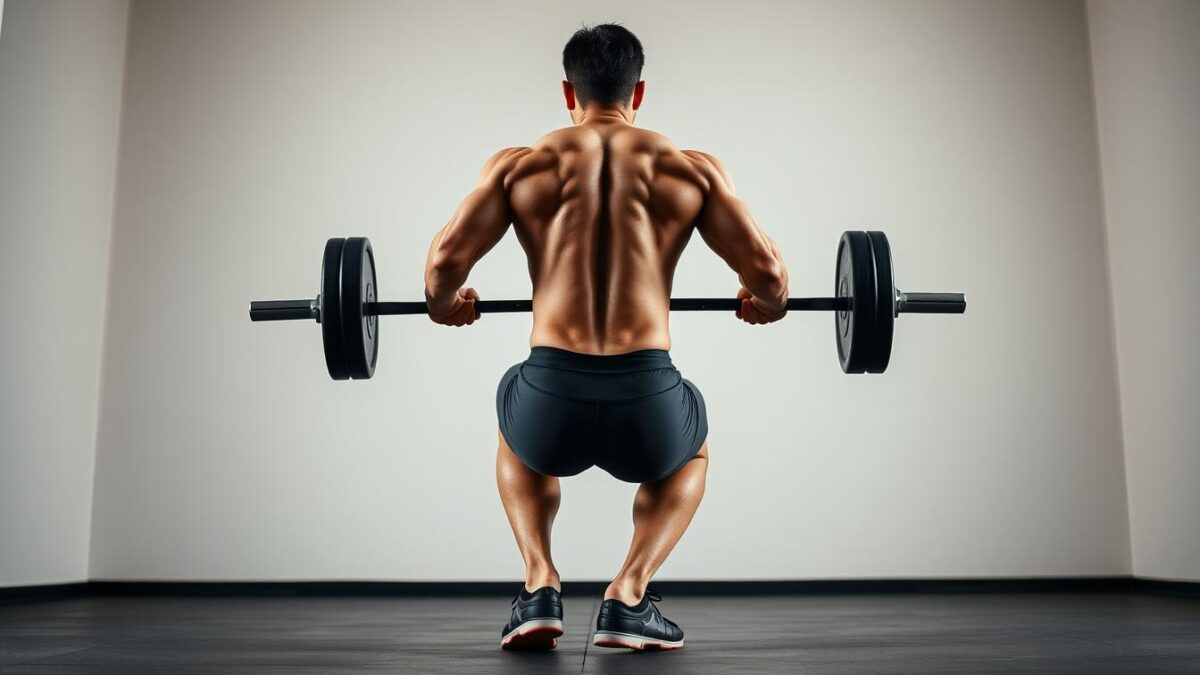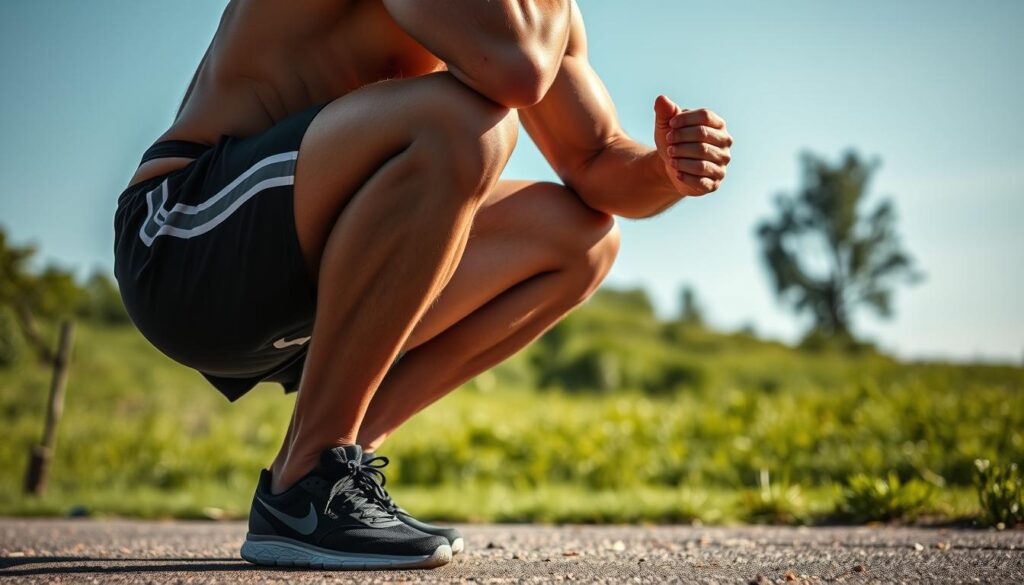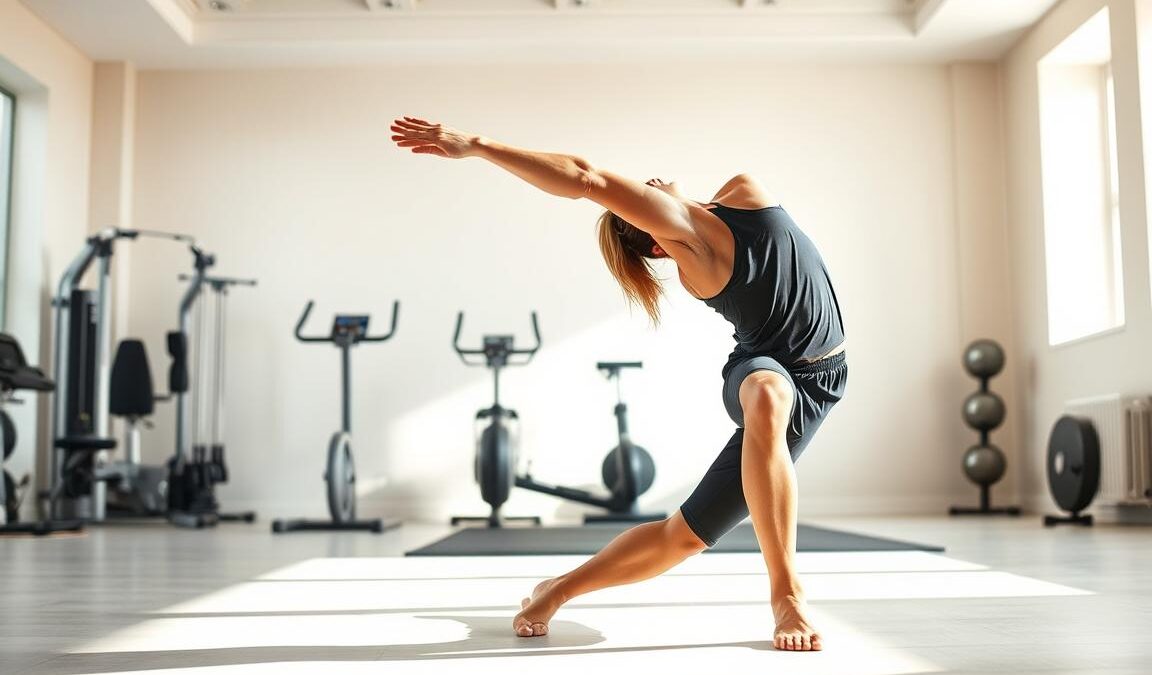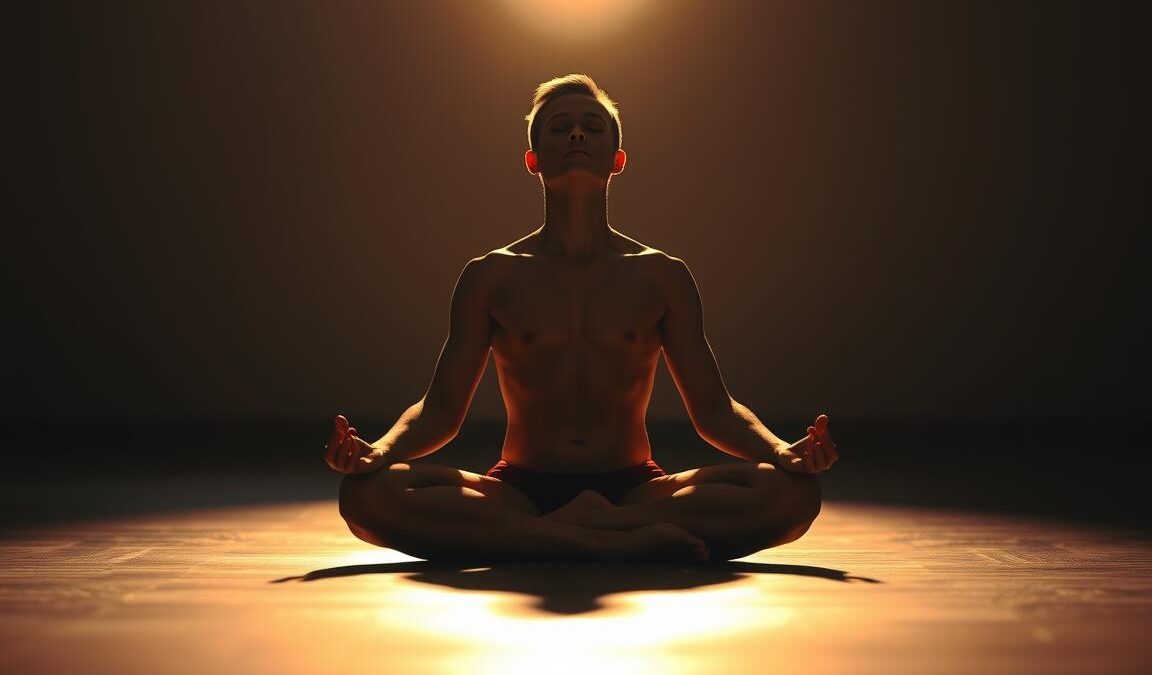
Unilateral Squat Form Cues That Improve Balance & Strength
Looking to boost your balance and strength? The unilateral squat could be your answer. This exercise targets one leg at a time. It helps build core stability and lower body strength.
Learning the right squat cues is key. It makes your workouts better and lowers injury risk. This makes your fitness journey easier.
In this section, we’ll cover important form cues for the unilateral squat. These tips will help you get the most out of this exercise.
The Basics of Unilateral Squats
Unilateral squats, also known as single-leg squats, are great for your strength training. They challenge your balance and work your core and lower body. You squat on one leg while keeping the other up, improving stability and coordination.
Before trying unilateral squats, it’s key to know the squat basics. These exercises target muscles used in running, like the quadriceps, hamstrings, and glutes. Learning traditional squats first is important, as unilateral squats are more challenging.
To get the most out of unilateral squats, start with basic strength training. Adding these squats to your routine can enhance muscle balance and performance in many activities. Always focus on proper form and technique for the best results.
Why Balance and Strength Matter
Balance and strength are key in our daily lives. They help us do everyday tasks with ease and confidence. By improving balance, we can tackle physical challenges at home or in sports better.
Strength training does more than build muscles. It boosts metabolism and helps prevent injuries. As we get older, strength keeps us mobile and independent. Unilateral squats are great for strengthening and balancing, improving how we move.
Strength and balance work together. Better strength means better stability. And better balance lets us use our strength more effectively. So, it’s important to do exercises like unilateral squats to stay healthy and perform well.
| Aspect | Effectiveness of Unilateral Squats |
|---|---|
| Balance Improvement | Enhances coordination and stability, reduces fall risk |
| Strength Development | Targets multiple muscle groups, builds functional strength |
| Injury Prevention | Strengthens supporting muscles and ligaments |
| Daily Functionality | Improves performance in everyday activities |
| Age-Related Mobility | Maintains independence and active lifestyle |
Key Muscles Targeted by Unilateral Squats
Unilateral squats are great for working out the lower body. They target the quadriceps, hamstrings, glutes, and calves. These muscles help with stability and power.
They also engage stabilizer muscles like the adductors and core. This helps with balance and muscle coordination. Training one side at a time can fix muscle imbalances, preventing injuries.
Adding unilateral squats to your workout routine strengthens major muscles. It’s a key part of a balanced fitness plan. This helps build a strong, balanced body for all activities.
Understanding the Unilateral Squat Form Cue
Learning the right way to do unilateral squats is key for safe and effective workouts. It’s important to keep your knee in line with your toes. This helps spread out the weight and lowers joint stress.
Also, make sure to keep your core muscles active. This helps you stay balanced and stable.
Keeping your spine straight is another must. Curving or arching your back can cause injuries. Try doing squats in front of a mirror. It helps you check your form and improve your technique.
Step-by-Step Guide to Perform Unilateral Squats
Unilateral squats are great for building strength and balance. This guide will show you how to do unilateral squats right. You’ll get the best results by following each step carefully.
Starting Position and Body Alignment
Start by standing on one leg. Lift the other leg a bit, bending the knee. Keep your body straight, engage your core, and look straight ahead. This position helps you stay stable while squatting.
Lowering into the Squat
Lower your body by bending your hips back. Make sure your knee is over your toes. Go down as far as you can comfortably, aiming for your hips to be level with the ground. Keep your balance during this part.
Returning to Starting Position
Push through your standing leg to get back up. Keep your body aligned as you move. Don’t let your non-supporting leg touch the ground to get the most out of this exercise.
Common Mistakes to Avoid During Unilateral Squats
Unilateral squats are great for building strength and balance. Knowing how to avoid common mistakes can improve your performance. Being aware of these pitfalls helps you avoid errors that can slow your progress.
Knee Placement and Alignment
Make sure your knee doesn’t go past your toes during the squat. It should stay in line with your foot. This keeps your knee safe and prevents strain.
Upper Body Positioning
Your upper body’s position is key for stability and effectiveness. Keep your shoulders back and chest open. Avoid leaning forward or arching your back to prevent injuries. A strong upper body ensures you do the squat right and safely.
Incorporating Unilateral Squats into Your Routine
Adding unilateral squats to your workout routine is a smart move. It boosts muscle balance and stability. Doing these exercises strengthens each leg, which helps even out muscle imbalances. Try to do 3 sets of 10-12 reps on each leg for best results.
Do unilateral squats on days off from tough workouts. This lets your muscles rest while you keep training. Pair these squats with lunges or step-ups for a well-rounded lower body workout.
Benefits of Unilateral Squats for Runners and Athletes
Unilateral squats are great for runners and athletes. They mimic the single-leg movements found in many sports. These exercises boost balance and core stability, key for success in sports.
Doing unilateral squats helps build strength in each leg. This can lead to better athletic performance. It also lowers the chance of injury caused by muscle imbalances.
These squats also boost explosive power. They prepare the muscles for quick starts and changes in direction. Adding them to your training can greatly improve your performance.
Here’s what you can gain from unilateral squats:
- Improved balance and coordination
- Increased core strength
- Enhanced muscle balance and joint stability
- Lower risk of injuries in competitive settings

Variations and Progressions for Advanced Training
As you get better in fitness, adding squat variations can really boost your workouts. Using dumbbells adds extra weight, making your squats harder. This helps improve your balance and makes daily tasks easier and safer.
Looking for a challenge? Try squats on a Bosu ball. It makes your core work harder because it’s unstable. Or, you could try pistol squats for a real test of balance and strength. Start with easier versions if you’re new, then move to the full version as you get better.
Adding these advanced methods to your workouts keeps things interesting. Always move at your own pace. This way, you build strength and skills safely before trying harder squats. It’s all about improving your performance without getting hurt.



